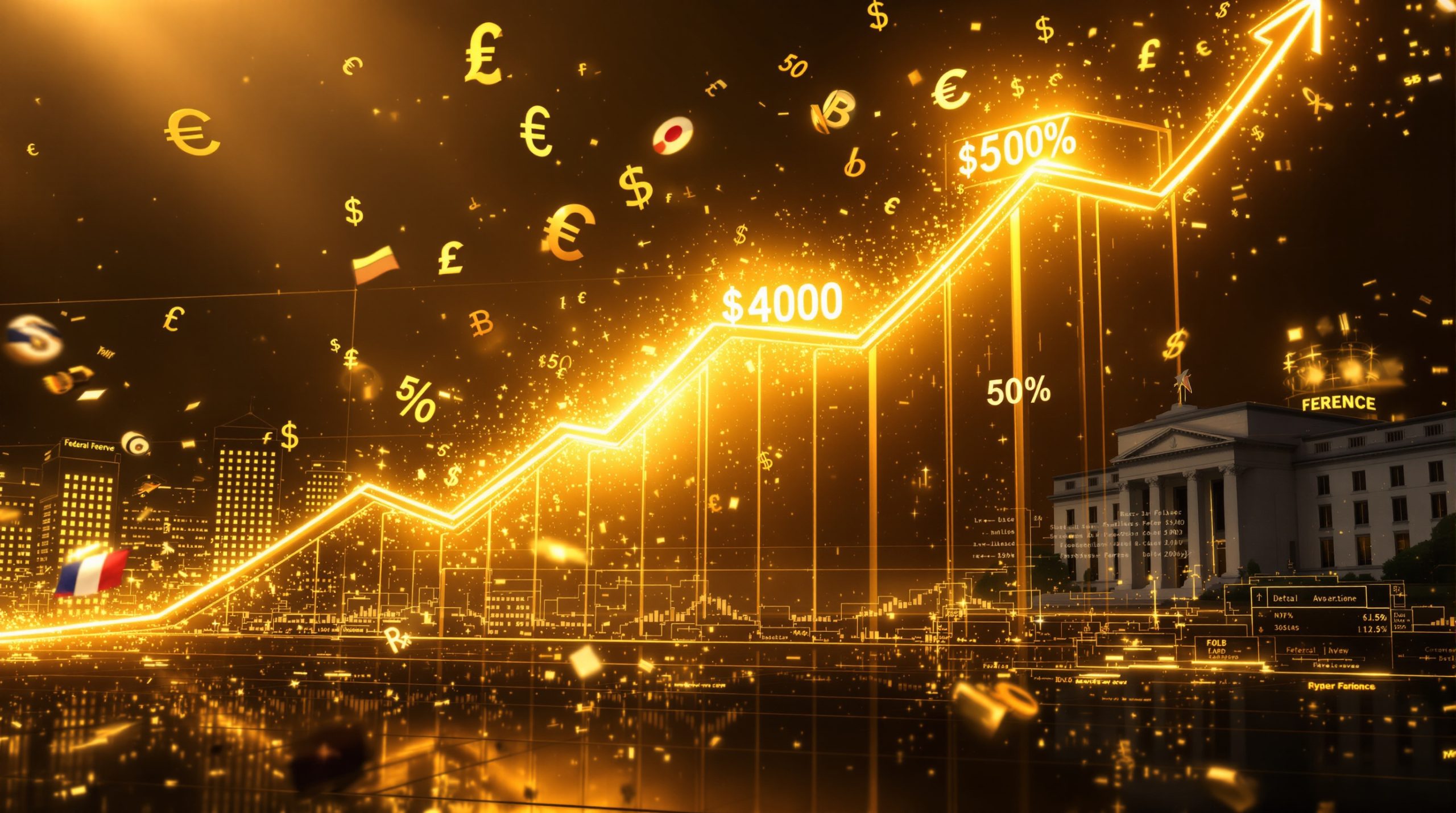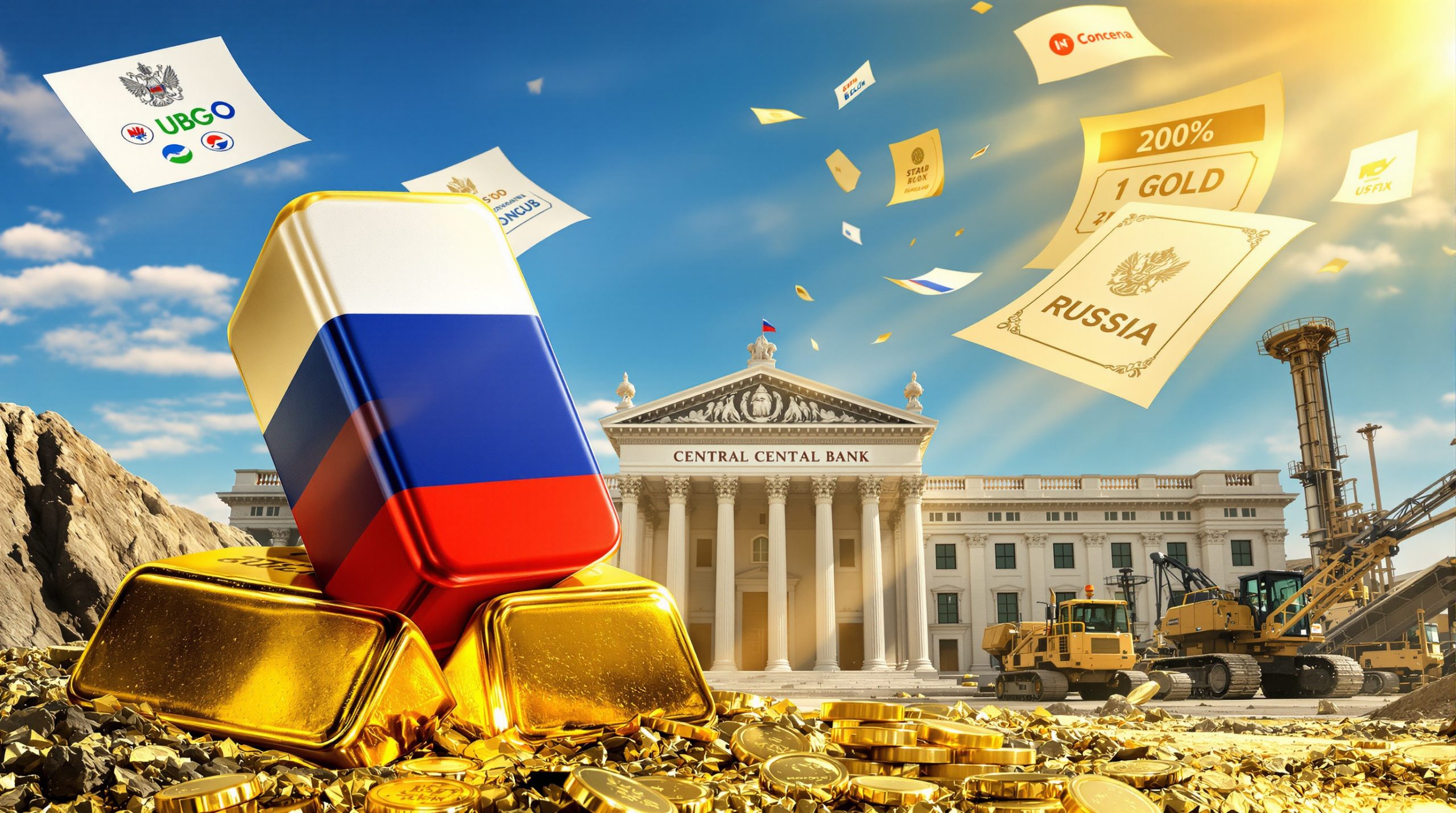What's Driving the Current Gold and Silver Market Analysis?
Gold has experienced a significant correction of approximately 11% from its recent peak in April 2025. This retracement appears to be testing a key support level, suggesting the correction may be nearing its end. The technical chart patterns confirm gold is retesting established support levels that have held during previous pullbacks.
For investors who view precious metals as being in a secular bull market, this pullback potentially represents a significant buying opportunity rather than a reason for concern. As one market analyst noted, "If you're a believer in a secular bull market for precious metals, these pullbacks are major opportunities."
While volatility has increased substantially in recent months, this is expected behavior following a strong upward movement. The increased volatility reflects growing market interest rather than fundamental weakness in the metal's outlook. Recent gold prices analysis shows that such corrections often precede stronger moves higher in established bull markets.
Understanding the Technical Indicators
The current gold price action shows classic technical behavior of a bull market correction. Support levels established during previous advances are being retested, which is a healthy sign of market consolidation rather than reversal.
According to technical analysis of the LBMA Gold Price archives, similar pullbacks occurred in 2020 and 2023, both of which were followed by significant advances. The CBOE Gold Volatility Index (GVZ) has spiked during this correction, another sign that institutional investors remain engaged rather than abandoning positions.
Market Insight: Increased volatility during price corrections often indicates a transfer of assets from weaker to stronger hands, setting the stage for the next advance.
This pattern suggests that large institutional investors may be using the pullback to establish or increase positions while retail investors exhibit fear—a classic sign of a bull market correction rather than a trend reversal.
Why is Silver Breaking Out Now?
Silver has finally broken out of its consolidation range between $30-35 per ounce, where it had been trading for some time. Notably, silver has shown remarkable resilience despite gold's correction since April, demonstrating independent strength while gold temporarily weakened.
This divergence between silver and gold is particularly significant as it often signals a healthy precious metals market rather than a concerning disconnect. Historically, when silver strengthens during gold corrections, it frequently confirms the underlying bull market trend rather than contradicting it.
The Cup and Handle Formation in Silver
Technical analysts have identified a major cup and handle pattern forming in silver's price chart. This classic technical formation, characterized by a rounded bottom followed by a period of consolidation, often precedes significant price movements.
The cup and handle pattern in COMEX silver futures suggests silver may be entering a price discovery phase. In technical terms, this means the metal is moving beyond established price ranges into territory where historical reference points become less relevant for price targeting.
Historical patterns from the 2011 and 2020 silver bull markets suggest that once silver breaks through long-standing resistance levels, it often experiences accelerated upward momentum. According to Kitco.com, the current silver-to-gold ratio is also showing signs of favoring silver, another bullish indicator for the white metal.
Technical Note: Cup and handle patterns typically show a measured move target equal to the depth of the cup from the breakout point, suggesting significant potential upside from current levels.
How Are Mining Companies Performing Relative to Metal Prices?
Major silver producers like Hecla Mining (HL) are showing signs of breaking out from long-term resistance levels. These established producers offer investors exposure to silver with the advantages of operational consistency, production scale, and North American operations.
Their stock movements often precede or confirm trends in the underlying metals. For instance, Hecla Mining's share price began advancing before silver's recent breakout, potentially signaling smart money positioning ahead of the metal's move.
Gold Miners Consolidating Below Resistance
Despite gold's recent pullback, certain gold mining stocks have begun moving higher, suggesting institutional investors may be positioning ahead of the next leg up in gold prices. Companies like Barrick Gold (GOLD) are trading at substantial discounts to their historical peaks despite earnings estimates approaching those seen during previous bull markets.
Barrick Gold's current share price of approximately $21 represents a dramatic discount from its 2011 peak of $65-70, even though earnings per share estimates are approaching similar levels to that period. This disconnect between earnings and share price creates a potential value opportunity for investors searching for undervalued gold stocks.
The Earnings-to-Price Disconnect
The notable disconnect between mining companies' earnings estimates and their current share prices is one of the most compelling aspects of the current market. Taking Barrick Gold as an example:
| Metric | 2011 Peak | Current (2025) |
|---|---|---|
| Share Price | $65-70 | ~$21 |
| EPS Estimates | Historical High | Approaching 2011 Levels |
| Gold Price | ~$1,900 | Similar Range After Correction |
| All-In Sustaining Cost | Higher Than Today | Improved Efficiency |
This table illustrates the potential undervaluation in the sector. With improved operational efficiency and similar gold prices to 2011, yet dramatically lower share prices, the mining sector appears to offer significant value relative to the underlying metals.
Industry Insight: Mining companies have dramatically improved operational efficiency since the last bull market, with many major producers reporting lower All-In Sustaining Costs (AISC) while maintaining production levels.
What's the Relationship Between Mining Stocks and Metal Prices?
Senior mining companies have underperformed gold itself for nearly two decades. This pattern of underperformance creates potential for significant upside when investor sentiment shifts toward mining equities.
Historical cycles suggest that after extended periods of underperformance, mining stocks can deliver outsized returns when they begin outperforming the underlying metals. Data from the 2003-2006 bull market shows that mining equities can deliver 2-3x the returns of the physical metals once the sentiment cycle turns positive.
The gold-stock relationship is critical for understanding market cycles and investor sentiment during different phases of precious metals bull markets.
Exploration Companies and the Risk Curve
The TSX Venture index, which is approximately 50% weighted toward exploration companies according to TMX Group data, shows a remarkably similar pattern to senior producers versus gold. This correlation demonstrates how capital flows through the mining sector:
- First to physical metals (perceived as safest)
- Then to established producers (operational leverage)
- Finally to exploration companies (maximum leverage)
This progression reflects investors' increasing risk appetite as a bull market matures. Currently, with the TSX Venture index breaking out on monthly charts, capital appears to be flowing into higher-risk mining ventures—typically a mid-to-late stage bull market indicator.
Signs of a Sector-Wide Breakout
The exploration index is quietly breaking out on monthly charts, indicating capital is beginning to flow into higher-risk mining ventures. This movement suggests the precious metals bull market remains intact, as derivatives of the gold trade are maintaining or gaining momentum despite gold's temporary correction.
The GDX (VanEck Gold Miners ETF) versus GLD (SPDR Gold Shares ETF) ratio shows mining stocks beginning to outperform physical gold, often an early signal of changing market dynamics. Historical data shows mining stocks can deliver 2-3x leverage to gold price movements during favorable market conditions.
How Does Copper Fit into the Precious Metals Picture?
Copper prices have reached unprecedented levels, reminiscent of gold's behavior when it first broke through the $2,000/oz resistance. Once copper definitively breaks through its long-standing resistance, it could enter a price discovery phase similar to what gold experienced when it added another $1,000/oz after breaking key resistance.
This parallel between copper and precious metals is often overlooked by analysts who rigidly categorize metals as either "industrial" or "precious." In reality, market behavior suggests these distinctions are less relevant during certain macro environments, and effective copper investment strategies may share similarities with precious metals approaches.
Impact of Trade Policies on Copper Markets
Recent 50% tariffs imposed on copper imports to the US created market volatility but had a surprisingly limited impact on global copper prices. According to London Metal Exchange data, copper prices declined only a few percentage points following the tariff announcement, suggesting underlying strength in the global copper market regardless of regional trade policies.
This resilience is particularly notable given the magnitude of the tariffs. Chilean equities and currency, highly exposed to copper exports, showed similar resilience, indicating the market perceives the demand fundamentals as stronger than policy headwinds.
Copper-to-Gold Ratio Breaking Out
The copper-to-gold ratio (measured in ounces of gold per metric ton of copper) is approaching a historical resistance level and appears poised to break out. This ratio challenges the conventional view that separates these metals into "cyclical" versus "safe haven" categories.
In reality, these metals often move in tandem during certain market phases, with copper sometimes following gold's lead. This relationship becomes particularly important during inflationary periods when both monetary and physical assets appreciate simultaneously.
Market Perspective: The traditional separation between "precious" and "industrial" metals breaks down during certain macro environments, particularly inflationary periods with supply constraints.
What Other Metals Show Opportunity in the Current Market?
Zinc prices have historically maintained a strong correlation with copper prices, but recently this relationship has diverged. Based on London Metal Exchange historical data, zinc prices may be positioned to follow copper's upward trajectory.
This potential "catch-up" movement represents an opportunity for investors looking beyond the more widely followed precious metals. LME zinc/copper ratio analysis shows zinc currently underpriced relative to copper compared to historical averages.
Platinum's Position in the Risk Curve
Platinum sits high on the risk curve among precious metals investments. As investors make money in gold and begin seeking higher-risk opportunities, capital often flows toward platinum. This progression through the risk spectrum is a typical feature of precious metals bull markets.
What makes platinum particularly interesting is its unique supply dynamics:
- Limited Production Sources: Unlike gold, platinum production is concentrated in just a few countries
- Mining Challenges: Deep, complex ore bodies make production expansion difficult
- Dual Demand: Both industrial and investment demand compete for limited supply
These factors create potential for outsized price movements when investment demand increases, as the supply cannot rapidly expand to meet new demand.
How Are Global Markets Responding to Precious Metals Strength?
The emerging markets equal-weighted FX index has broken through a significant resistance level, some of which had been in place for a decade. These breakouts in derivatives of gold markets indicate a broadening macro trend rather than isolated movements in precious metals.
Currency movements often provide early signals about commodity cycles, as commodity-exporting nations see their currencies strengthen when global demand for raw materials increases. The current breakout in emerging market currencies suggests a broader commodity bull market may be developing.
Brazilian Equities and Commodity Correlations
Brazilian equities have shown a surprising historical correlation with platinum prices despite Brazil not being a platinum producer. MSCI Brazil index data compared with platinum prices shows this correlation has held across multiple market cycles.
This correlation exists because both assets sit high on the risk curve and tend to benefit from the same macro conditions that favor precious metals. As investors move down the risk chain from gold to other assets, commodity-exposed markets like Brazil often benefit from both direct export advantages and capital inflows seeking higher returns.
The US Dollar's Influence on Global Markets
The DXY index (US Dollar Index) is experiencing one of its worst performances since 1973 according to Federal Reserve Economic Data (FRED). This dollar weakness creates a supportive environment for precious metals and commodity-exposed markets, particularly in Latin America.
The dollar's performance has significant implications for precious metals:
| Impact of Weakening Dollar | Effect on Markets |
|---|---|
| Commodities priced in USD become cheaper for foreign buyers | Increased demand from international markets |
| Inflation concerns typically increase | Flight to hard assets as stores of value |
| Emerging markets with USD-denominated debt benefit | Stronger performance in commodity-exporting nations |
| Central banks may diversify reserves away from USD | Increased official sector gold purchases |
The long-term trend suggests continued dollar weakness, which typically benefits gold, silver, and emerging markets with strong commodity exposure.
What Government Policies Are Affecting the Metals Market?
The Department of Defense's 15% stake in MP Materials (NYSE: MP) represents a significant shift in government policy toward securing critical mineral supply chains. According to MP Materials' SEC filings, this level of direct government investment in a public mining company is unprecedented in recent decades.
This level of government investment in public companies has historical precedents primarily during World War II, signaling the strategic importance now placed on rare earth and critical minerals in both economic and national security contexts.
Recent developments in US critical minerals policy highlight the growing importance of these resources for both economic and defense applications.
Implications for the Mining Sector
This government involvement acknowledges fundamental challenges in US raw materials supply chains and suggests potential for increased government engagement with mining and materials companies. The U.S. Critical Minerals Strategy (2022) further underscores this shift in policy priorities.
Such policy shifts could create both opportunities and new regulatory considerations for companies in the critical minerals space:
-
Potential Benefits:
- Expedited permitting for strategic projects
- Direct investment or loan guarantees
- Premium pricing for domestic production
- Research funding for processing technology
-
Potential Challenges:
- Increased regulatory oversight
- Production or pricing constraints during emergencies
- Export restrictions on critical materials
- Requirements for domestic processing
For investors, understanding these policy dynamics becomes increasingly important when evaluating companies in the critical minerals space.
Is This the Beginning or Middle of a Gold Bull Market?
Gold remains historically undervalued relative to US equities when viewed through the lens of the gold-to-Dow Jones ratio. World Gold Council data shows this ratio remains well below historical peaks, suggesting the precious metals bull market may still be in its early stages rather than approaching a peak.
Historical cycles indicate significant potential upside remains, particularly when comparing current valuations to previous bull market peaks. The ratio of gold to equities provides a valuable perspective on relative valuation across asset classes.
Treasury Market Signals
The long end of the yield curve is rising due to concerns about fiscal imbalances, while the short end (represented by 2-year yields) has room to decline as interest rate suppression becomes more likely. This environment typically favors precious metals as a hedge against both inflation and financial instability.
The "alligator mouth" pattern—where commodity prices show strength not yet reflected in inflation expectations—is particularly significant. This divergence between market-based inflation expectations (break-even rates) and actual commodity price movements often precedes inflationary periods that benefit precious metals.
Economic Insight: When commodity prices rise before inflation expectations, it often signals a coming shift in monetary policy that benefits precious metals.
How Do Commodities Compare to Gold in the Current Cycle?
Commodities appear significantly undervalued relative to gold based on historical ratios. Periods of extreme undervaluation in this ratio have typically preceded strong rallies in broader commodity prices. This suggests potential for other commodities to "catch up" to gold's performance without necessarily implying weakness in gold itself.
This relationship can be visualized through the following commodity-to-gold ratios:
| Commodity/Gold Ratio | Current Level | Historical Average | Potential Upside |
|---|---|---|---|
| Copper/Gold | Near Breakout | Higher | Moderate |
| Silver/Gold | Improving | Higher | Significant |
| Zinc/Gold | Depressed | Much Higher | Substantial |
| Platinum/Gold | Near Lows | Much Higher | Substantial |
The Broadening Commodity Bull Market
The current market environment appears conducive to a broadening commodity bull market where multiple metals and resources perform well simultaneously. This pattern often emerges as inflation concerns grow and investors seek tangible assets across the commodity spectrum.
S&P Global Market Intelligence data shows that during previous commodity bull markets, performance typically begins with precious metals before broadening to base metals and eventually agricultural commodities. The current cycle appears to be following this historical pattern.
FAQs About Gold and Silver Market Analysis
What signals indicate we're in a secular bull market for precious metals?
Key indicators include breakouts in mining stocks ahead of metal prices, silver outperforming gold during gold corrections, exploration companies gaining momentum, and precious metals maintaining strength despite dollar rallies. The current market is displaying many of these characteristics.
Additionally, increasing central bank gold purchases, declining mining discoveries despite increased exploration budgets, and broadening investor participation across the risk spectrum all support the bull market thesis.
How does silver typically perform compared to gold in a bull market?
Silver typically lags gold initially but eventually outperforms due to its smaller market size and industrial demand components. Once silver begins outperforming, it often signals the bull market is gaining momentum across the precious metals complex.
Historical data shows silver's volatility is approximately 1.5-2x that of gold, creating both higher risk and potential return. During the 2011 bull market peak, silver outperformed gold by nearly 3:1 from the 2008 bottom.
Why do mining stocks sometimes underperform the metals they produce?
Mining stocks face operational challenges, capital expenditure requirements, and jurisdictional risks that physical metals don't. Specific factors include:
- Operational risks: Labor disruptions, equipment failures, grade variability
- Jurisdiction issues: Changing tax regimes,
Ready to Catch the Next Big Mineral Discovery?
Stay ahead of the market with Discovery Alert's proprietary Discovery IQ model, delivering instant notifications on significant ASX mineral discoveries and transforming complex data into actionable investment insights. Explore why major mineral discoveries can lead to substantial returns by visiting Discovery Alert's dedicated discoveries page and begin your 30-day free trial today.




